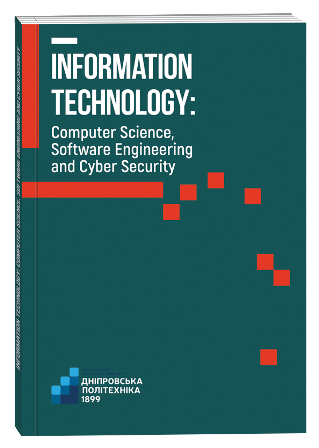RESEARCH ON MECHANISMS TO IMPROVE THE EFFICIENCY OF COMPUTER NETWORK PROTECTION AGAINST POLYMORPHIC COMPUTER VIRUSES
DOI:
https://doi.org/10.32782/IT/2025-1-12Keywords:
cybersecurity, cyberspace, polymorphic viruses, neural networks, adaptive analysis, threat detection, behavioral analysis, defense algorithms.Abstract
The objective of this undertaking is to execute a comprehensive assessment of the methodologies used to enhance the robustness of a computer network’s defenses against polymorphic computer viruses. This involves identifying both the strengths and weaknesses inherent in the individual components comprising this protective mechanism, and ultimately proposing adaptive strategies to counteract contemporary threats. A primary focus will be placed on developing novel methods designed to effectively combat polymorphic viruses, which possess the ability to alter their code to evade detection by conventional antivirus systems. The novelty of the research resides in the integration of adaptive methodologies, specifically behavioral analysis and machine learning techniques, to robustly identify previously unseen polymorphic virus samples. This is achieved by accounting for their inherent code mutation capabilities, preventing detection by conventional antivirus solutions. The suggested mechanism utilizes neural networks for the dynamic modeling of software behavior. This approach facilitates prompt response to emerging threats and the ability to adapt to changes within viral code. The outcome is a substantial increase in detection accuracy alongside a reduced occurrence of false positives. The study’s findings validate the proposed mechanism’s effectiveness against polymorphic viruses, leveraging a dynamic approach for anomaly detection. Implementing these methods greatly enhances the security of computer networks, fortifying them against the rapid evolution of current cyber threats. The outcomes suggest that employing machine learning and neural networks is a promising avenue for advancements in cybersecurity systems. Such systems can effectively counter unknown threats, a critical need in the present environment where cyberattacks are escalating in number and complexity. Future efforts will focus on optimizing the suggested mechanism for its integration into actual network defense systems, ultimately ensuring high security levels and minimizing losses due to cyberattacks.
References
Using the Latest Methods of Cluster Analysis to Identify Similar Profiles in Leading Social Networks. Bohdan Zhurakovskyi, Ihor Averichev and Ivan Shakhmatov. Information Technology and Implementation (Satellite) Conference Proceedings, 21 November, 2023. URL: https://ceur-ws.org/Vol-3646/Paper_12.pdf
Анна Корченко, Методи ідентифікації аномальних станів для систем виявлення вторгнень. Монографія, Київ, ЦП «Компринт», 2019 URL: https://nubip.edu.ua/sites/default/files/u34/monografiya_korchenko_anna_1.pdf
С. Казмірчук, А. Корченко, Т. Паращук, «Аналіз систем виявлення вторгнень». Захист інформації, Т. 20, № 4, с. 259–276, 2018. https://doi.org/10.18372/2225-5036.24.13431
І. Терейковський, А. Корченко, Т. Паращук, Є. Педченко, «Аналіз відкритих систем виявлення вторгнень». Безпека інформації Т. 24, № 3, с. 201–216, 2018. https://doi.org/10.18372/2225-5036.24.13431
Alieyan K. An overview of DDoS attacks based on DNS / K. Alieyan, M. M. Kadhum, M. Anbar, S. Ul. Rehman, N. KA. Alajmi. 2016 International Conference on Information and Communication Technology Convergence (ICTC). – Jeju Island (South Korea), October 19, 2016. Pp. 276–280.
Інформаційне агентство Уніан. Bloomberg: Китай міг вбудувати шпигунські чіпи у сервери Apple і Amazon URL: https://www.unian.ua/world/10286736-bloomberg-kitay-mig-vbuduvati-shpigunski-chipi-userveri-apple-i-amazon.html
Antonakakis M. Understanding the mirai botnet. M. Antonakakis, T. April, M. Bailey, M. Bernhard, E. Bursztein, J. Cochran, Z. Durumeric, J. A. Halderman, L. Invernizzi, M. Kallitsis, D. Kumar, C. Lever, Z. Ma, J. Mason, D. Menscher, C. Seaman, N. Sullivan, K. Thomas, Yi. Zhou. 26th {USENIX} Security Symposium ({USENIX} Security 17)(Vancouver, BC). 2017. Pp. 1093–1110.
Adleman L. An Abstract Theory of Computer Viruses. Proceedings of the Conference on the Theory and Application of Cryptography. Santa Barbara, CA (USA), 21–25 August, 1988. Pp. 354–374.
Adleman L. A method for obtaining digital signatures and public-key cryptosystems / L. Adleman, R. Rivest, A. Shamir. Proceedings of the Communications of the ACM – Special 25-th Anniversary Issue. Vol. 26. 1983. Pp. 1–3.
Akiyama M. A proposal of metrics for botnet detection based on its cooperative behavior / M. Akiyama, T. Kawamoto, M. Shimamura, T. Yokoyama, Y. Kadobayashi, S. Yamaguchi. International Symposium on Applications and the Internet Workshops (SAINTW’07), Hiroshima (Japan) January 15–19, 2007. Pp. 82–85.
Alqurashi S. A Comparison of Malware Detection Techniques Based on Hidden Markov Model / S. Alqurashi, O. Batarfi. Journal of Information Security. 2016. Vol. 7. Pp. 215–223.
Alqurashi S. A comparison between API call sequences and opcode sequences as reflectors of malware behavior/ S. Alqurashi, O. Batarfi. 2017 12th International Conference for Internet Technology and Secured Transactions (ICITST) (London, UK). 11.12.2017 Pp. 105–110.
Alazab M. Spam and criminal activity / M. Alazab, R. Broadhurst. Trends and Issues in Crime and Criminal Justice (Australian Institute of Criminology). December 3, 2016. Vol. 526 Pp. 1–20.
Ponochovny P. Low-speed http ddos attack prevention model for end users. Cybersecurity: education, science, technique. 2024. Vol. 2, no. 26. P. 291–304. https://doi.org/10.28925/2663-4023.2024.26.695
Guerid H. Privacy-preserving domain-flux botnet detection in a large scale network / H. Guerid, K. Mittig, A. Serhrouchni. Proceedings of the 2013 Fifth International Conference on Communication Systems and Networks. Bangalore (India), January 7–10, 2013. Pp. 1–9.
Guharoy R. A theoretical and detail approach on grid computing a review on grid computing applications / R. Guharoy et al. Proceedings of 8th Annual Industrial Automation and Electromechanical Engineering Conference. Bangkok (Thailand), August 16–18, 2017. Pp. 142–146.







